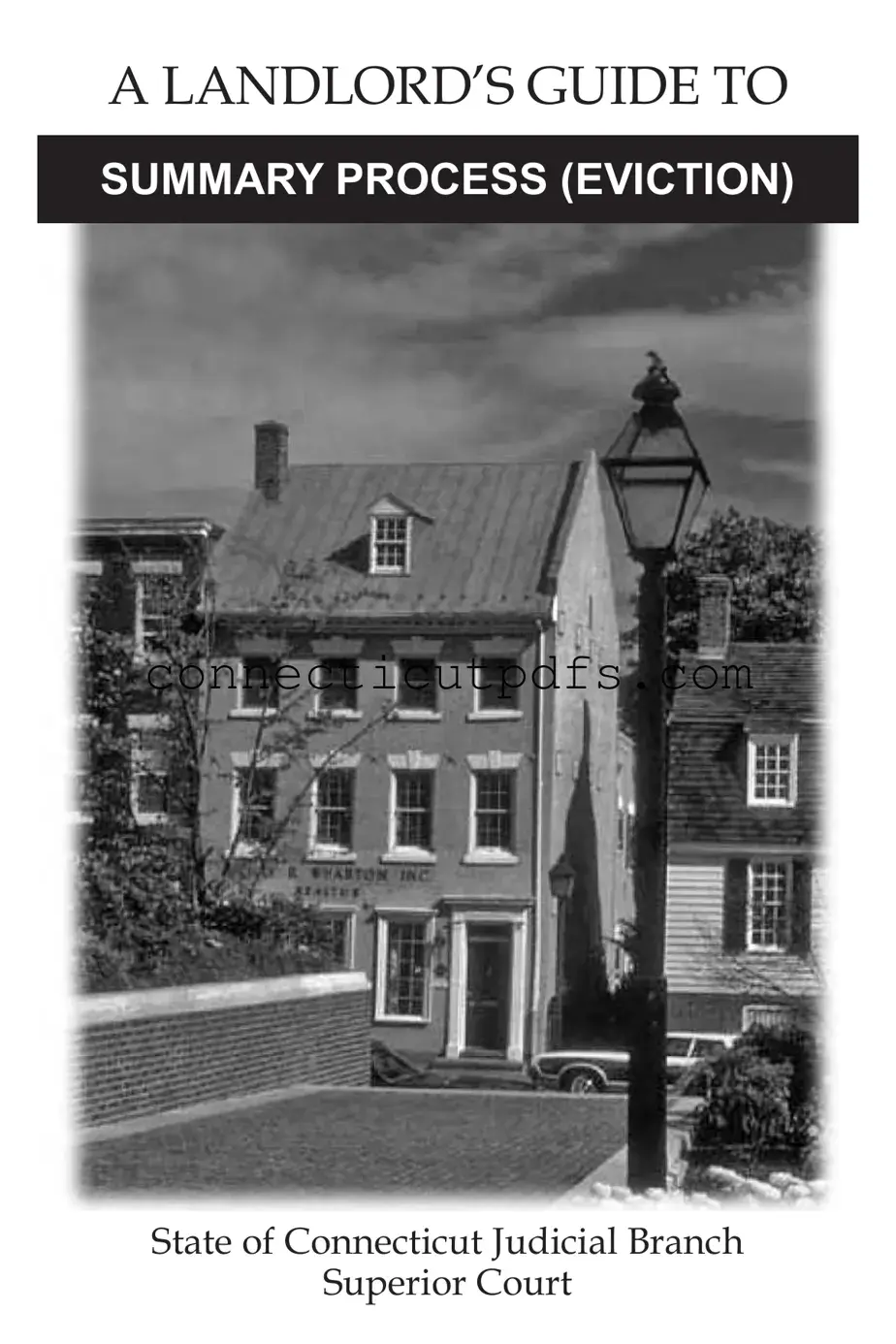What is the Connecticut Eviction form?
The Connecticut Eviction form is a legal document used by landlords to initiate the eviction process against tenants. This form outlines the reasons for eviction and provides the necessary details about the tenant and the property. It is a crucial step in the summary process, which is a legal procedure designed to quickly resolve disputes between landlords and tenants.
What is a Notice to Quit?
A Notice to Quit is the first step in the eviction process. It is a formal notification from the landlord to the tenant, indicating that the tenant must vacate the property. The notice must specify the reason for eviction, such as non-payment of rent, and must give the tenant at least three full days to move out. This notice is essential, as it provides the tenant with an opportunity to rectify the situation before legal action is taken.
How do I complete the Notice to Quit form?
To complete the Notice to Quit form, you need to provide the exact name and address of each adult tenant you wish to evict. This includes any apartment or floor numbers. The form must be signed by you, the landlord, and you should keep one copy for your records. Additionally, ensure that you have enough copies for each tenant living in the unit.
What happens after the Notice to Quit is served?
After the Notice to Quit is served, the tenant has three full days to vacate the premises. If the tenant does not leave by the specified date, you can proceed with filing a Summons and Complaint in court to formally start the eviction process. This step is necessary to obtain a court order for eviction.
What is a Summons and Complaint?
A Summons and Complaint is a legal document that officially initiates the eviction process in court. The Summons notifies the tenant of the court date, while the Complaint outlines the reasons for the eviction. This document must be served to the tenant, and it is crucial for moving forward with the eviction if they fail to vacate the property after receiving the Notice to Quit.
Can I evict a tenant for reasons other than non-payment of rent?
Yes, landlords can evict tenants for various reasons, including lease violations or termination of lease by lapse of time. However, the process may be more complex depending on the reason for eviction. It is advisable to consult legal guidance if you are unsure about the specific grounds for eviction.
What is a default judgment in the eviction process?
A default judgment occurs when the tenant fails to respond to the Summons and Complaint within the specified time frame. If this happens, the court may rule in favor of the landlord, allowing them to proceed with the eviction without a trial. This can expedite the eviction process significantly.
What should I do if the tenant does not appear in court?
If the tenant does not appear in court, you may request a default judgment. This means the court will likely rule in your favor, allowing you to take further steps to evict the tenant. It's important to follow the court's procedures carefully to ensure that your request is granted.
What is an execution for possession?
An execution for possession is a court order that allows the landlord to take back possession of the property after a judgment has been made in their favor. This order permits law enforcement to assist in removing the tenant from the premises if they do not leave voluntarily.
Where can I find assistance with the eviction process?
If you need assistance with the eviction process, you can contact the Lawyer Referral Service or consult an attorney who specializes in landlord-tenant law. Additionally, the Connecticut Judicial Branch provides resources and information that can help guide you through the process.



